SECURITIES AND EXCHANGE COMMISSION
WASHINGTON, DC
(RULE 14a-101)
INFORMATION REQUIRED IN PROXY STATEMENT
SCHEDULE 14A INFORMATION
the
Securities Exchange Act of 1934
(Amendment (Amendment No.)
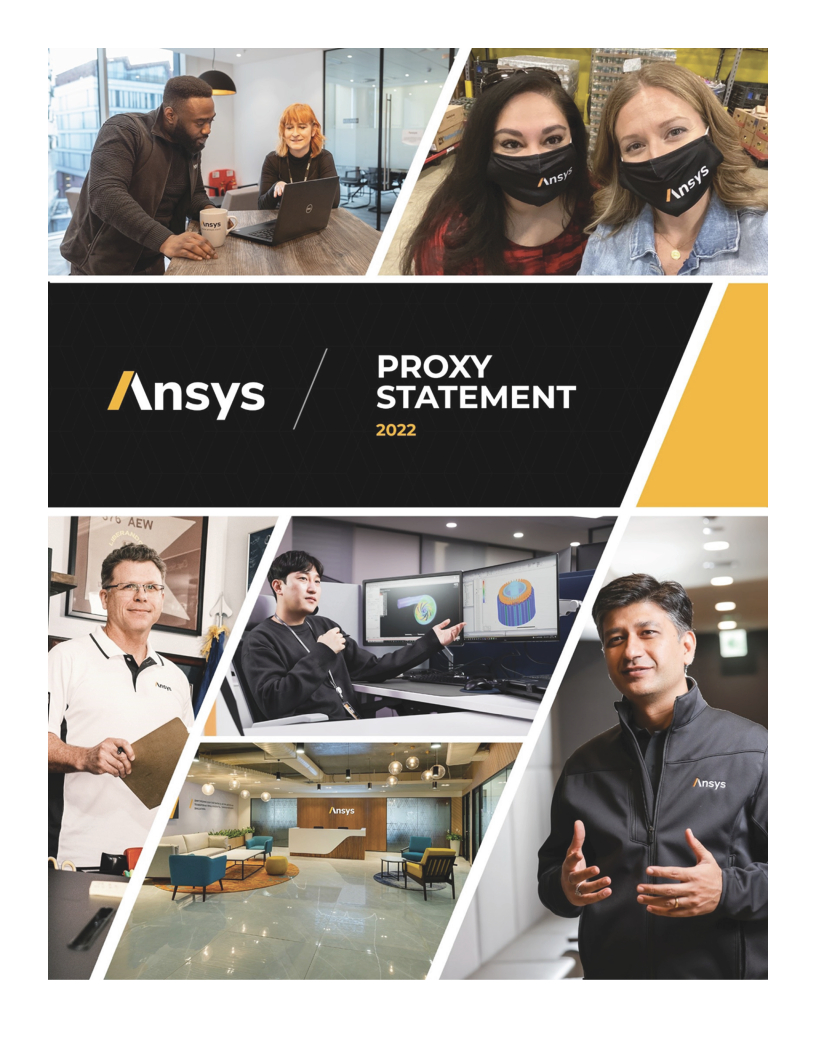
 |  |
No fee required.
![[MISSING IMAGE: ic_slash-pn.jpg]](https://capedge.com/proxy/DEF 14A/0001104659-24-045818/ic_slash-pn.jpg) A
A 2021 was another excellent year for Ansys. Our strong execution and growing markets enabled us to over perform relativeMessage to our own goalsStockholders
![[MISSING IMAGE: ph_ronaldwhovsepian-pn.jpg]](https://capedge.com/proxy/DEF 14A/0001104659-24-045818/ph_ronaldwhovsepian-pn.jpg)
![[MISSING IMAGE: ph_ajeisgopal-pn.jpg]](https://capedge.com/proxy/DEF 14A/0001104659-24-045818/ph_ajeisgopal-pn.jpg)
Weevery day.
2022.
Over the course of the year, lines.
Ansys also added to our product portfolio through strategic acquisitions in 2021. Our acquisitionwith new technologies and improved performance to drive customer innovation. Enhancements to our flagship solutions empower our users with scalable digital engineering workflows that are critical to digital transformation. We also released new technologies that build on our ongoing expansion of Phoenix Integration, Inc. enables users to connect a range of engineering tools together in multi-tool workflows for broad and robust model-based engineering. These solutions bridge the gap between engineering analysisartificial intelligence/machine learning, high-performance computing and the systems model, ensuring thatcloud across the simulation portfolio and customer community. Our continued investment in our product requirements are met and in sync with the engineering analysis conducted throughout the product development process.
With our acquisition of Zemax, LLC, Ansys now offers customers a comprehensive solution for simulating the behavior of light in complex, innovative products—ranging from the micro scale with our photonics products, to the imaging of the physical world, to human vision perception. That comprehensive solution enables users to create optimal designs more quickly by streamlining the workflow and communication among photonics, optical, mechanical, and manufacturing engineers.
During 2021, Ansys also made progress with our environmental, social, and governance initiatives. We have continued to advance sustainability – within our own operations and those of our customers – using our market-leading simulation solutions. We have invested in diverse talent and our ONE Ansys culture to make Ansys an employer of choice. And we are committed to working with our stakeholders to help them achieve their goals.
Our 2021 results areportfolio is a testament to our commitment to advancing customer experience, accelerating democratization of simulation, and powering next-generation innovation.
As excited2023 will carry into 2024 as we are aboutcontinue to enable our achievements in 2021,customers’ transformations and help them to design and develop the most cutting-edge products imaginable. Of course, that will happen as we are even more confident in the future. Our ongoing momentum, strong customer relationships and market-leading simulation portfolio will help us meet our goals for our business,begin to prepare for the communities we serve,impending transaction with Synopsys. By joining forces, our two organizations will combine each company’s highly complementary capabilities to meet the evolving needs of today’s engineers and for our stockholders in 2022 and beyond.
to drive new levels of customer innovation.
| | ![[MISSING IMAGE: sg_ronaldwhovsepian-bw.jpg]](https://capedge.com/proxy/DEF 14A/0001104659-24-045818/sg_ronaldwhovsepian-bw.jpg) | | | ![[MISSING IMAGE: sg_ajeisgopal-bw.jpg]](https://capedge.com/proxy/DEF 14A/0001104659-24-045818/sg_ajeisgopal-bw.jpg) | |
 |  | ||||
| Ronald W. Hovsepian | |||||
Chairman of the Board | | | Ajei S. Gopal President and CEO | |
Non-GAAP revenue and constantare is a non-GAAP measures. measure. For additional information onnon-GAAP revenue and constant currency, please see Annex A: Non-GAAP Reconciliations. ACV is a metric we use to better understand the business. There is no GAAP measure comparable to ACV. For a description of ACV, see the section titled “Performance Metrics for 2021Regular-Cycle 2023 PSU Awards” in the accompanying proxy statement.
![[MISSING IMAGE: ic_slash-pn.jpg]](https://capedge.com/proxy/DEF 14A/0001104659-24-045818/ic_slash-pn.jpg) Notice of Annual Meeting of Stockholders
Notice of Annual Meeting of Stockholders
2600 Ansys Drive
Canonsburg, PA 15317
844-462-6797
March 28, 2022
NOTICE OF ANNUAL MEETING OF
STOCKHOLDERS
To Be Held on Thursday, May 12, 2022
| | Date and Time | | | Virtual Meeting Site | |
| | Friday, June 7, 2024 11:00 A.M. Eastern | | | www.virtualshareholdermeeting.com/anss2024 | |
| | | | | Who Can Vote | |
| | | | | www.virtualshareholdermeeting.com/anss2024 | |
1 | | | Election of three | | | | |
2 | | | Ratification of the selection of Deloitte & Touche LLP as the Company’s independent registered public accounting firm for fiscal year | | | | |
3 | | | Advisory approval of the compensation of our named executive officers; | | | | |
|
|
|
|
Stockholder proposal requesting the | | | | |
5 | | | Such other business as may properly come before the | | | | |

![[MISSING IMAGE: sg_janetlee-bw.jpg]](https://capedge.com/proxy/DEF 14A/0001104659-24-045818/sg_janetlee-bw.jpg)
Senior Vice President, General Counsel and Secretary
| | | | |||
| | How to Cast Your Vote | ||||
Your vote is important to the future of Ansys. If you are a registered stockholder, please vote your shares as soon as possible by one of the following methods: | | ||||
| | ![[MISSING IMAGE: ic_online-pn.jpg]](https://capedge.com/proxy/DEF 14A/0001104659-24-045818/ic_online-pn.jpg) | | | Vote Online www.proxyvote.com | |
| | ![[MISSING IMAGE: ic_phone-pn.jpg]](https://capedge.com/proxy/DEF 14A/0001104659-24-045818/ic_phone-pn.jpg) | ||||
| | |
|
| ||
| Vote by Phone
| | |||
| | ![[MISSING IMAGE: ic_mail-pn.jpg]](https://capedge.com/proxy/DEF 14A/0001104659-24-045818/ic_mail-pn.jpg) |
| | Vote by Mail If you received printed copies of our proxy materials, complete, sign, date, and mail your signed proxy card | |
| If you are a street name stockholder (i.e., you hold your shares through a broker, bank or other nominee), please vote your shares as soon as possible by following the instructions from your broker, bank or other nominee. Registered stockholders and street name stockholders may also vote online during the anss2024 .See “Other | | ||
| ||||
NOTE ABOUT FORWARD-LOOKING STATEMENTS
This proxy statement contains forward-looking statements within the meaning of the Private Securities Litigation Reform ActNotice of 1995. Forward-looking statements are statements that provide current expectationsAnnual Meeting of Stockholders, Proxy Statement or forecastsAnnual Report unless you specifically request a copy. You may request paper copies, including a proxy card, by following the instructions on the Notice of future events basedInternet Availability of Proxy Materials. We began making our proxy materials available on certain assumptions. Forward-looking statements are subject to risks, uncertainties, and factors relating to our business which could cause our actual results to differ materially from the expectations expressed in or implied by such forward-looking statements. We describe such risks, uncertainties, and factors in the “Risk Factors,” “Quantitative and Qualitative Disclosures about Market Risk,” and “Management’s Discussion and Analysis of Financial Condition and Results of Operations” sections of our Forms 10-K and 10-Q. Many of these risks, uncertainties, and factors are currently amplified by, and may continue to be amplified by, the COVID-19 pandemic.
Forward-looking statements use words such as “anticipate,” “believe,” “could,” “estimate,” “expect,” “forecast,” “intend,” “likely,” “may,” “outlook,” “plan,” “predict,” “project,” “should,” “target,” or other words of similar meaning. Forward-looking statements include those about market opportunity, including our total addressable market. We caution readers not to place undue reliance upon any such forward-looking statements, which speak only as of the date they are made. We undertake no obligation to update forward-looking statements, whether as a result of new information, future events or otherwise.
The risks associated with the following, among others, could cause actual results to differ materially from those described in any forward-looking statements:
|
|
|
|
|
|
|
|
|
|
|
|
|
|
|
|
INFORMATION REFERENCED IN THIS PROXY STATEMENT
The content of the websites referred to in this proxy statement are not deemed to be part of, and are not incorporated by reference into, this proxy statement.
![[MISSING IMAGE: cv_ofc-4c.jpg]](https://capedge.com/proxy/DEF 14A/0001104659-24-045818/cv_ofc-4c.jpg)



![[MISSING IMAGE: lg_ansyssm-pn.jpg]](https://capedge.com/proxy/DEF 14A/0001104659-24-045818/lg_ansyssm-pn.jpg)


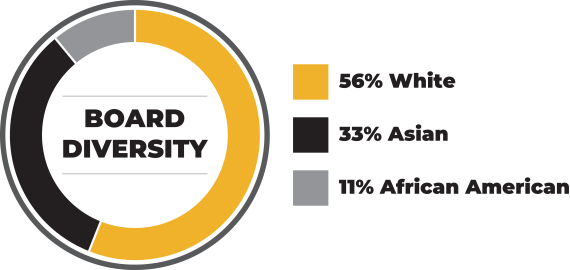

![[MISSING IMAGE: tb_average-pn.jpg]](https://capedge.com/proxy/DEF 14A/0001104659-24-045818/tb_average-pn.jpg)
![[MISSING IMAGE: pc_boarddiversity-pn.jpg]](https://capedge.com/proxy/DEF 14A/0001104659-24-045818/pc_boarddiversity-pn.jpg)
![[MISSING IMAGE: pc_female-pn.jpg]](https://capedge.com/proxy/DEF 14A/0001104659-24-045818/pc_female-pn.jpg)
![[MISSING IMAGE: pc_independent-pn.jpg]](https://capedge.com/proxy/DEF 14A/0001104659-24-045818/pc_independent-pn.jpg)
![[MISSING IMAGE: lc_cumulative-pn.jpg]](https://capedge.com/proxy/DEF 14A/0001104659-24-045818/lc_cumulative-pn.jpg)
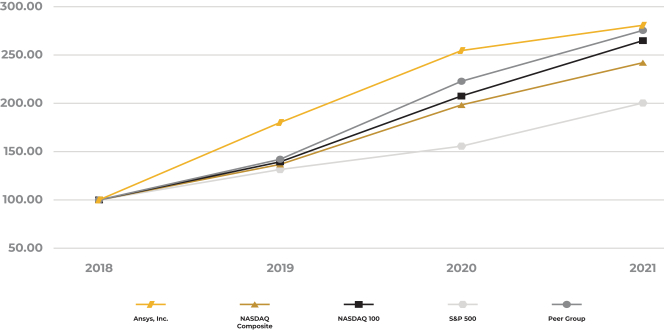
![[MISSING IMAGE: pc_ceo-pn.jpg]](https://capedge.com/proxy/DEF 14A/0001104659-24-045818/pc_ceo-pn.jpg)
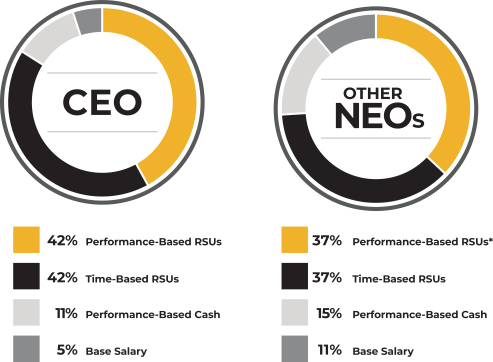
![[MISSING IMAGE: pc_otherneos-pn.jpg]](https://capedge.com/proxy/DEF 14A/0001104659-24-045818/pc_otherneos-pn.jpg)
![[MISSING IMAGE: ic_tick-4c.jpg]](https://capedge.com/proxy/DEF 14A/0001104659-24-045818/ic_tick-4c.jpg)


![[MISSING IMAGE: ic_cross-4c.jpg]](https://capedge.com/proxy/DEF 14A/0001104659-24-045818/ic_cross-4c.jpg)

![[MISSING IMAGE: ic_audit-pn.jpg]](https://capedge.com/proxy/DEF 14A/0001104659-24-045818/ic_audit-pn.jpg)
![[MISSING IMAGE: ic_compensation-pn.jpg]](https://capedge.com/proxy/DEF 14A/0001104659-24-045818/ic_compensation-pn.jpg)
![[MISSING IMAGE: ic_governance-pn.jpg]](https://capedge.com/proxy/DEF 14A/0001104659-24-045818/ic_governance-pn.jpg)
![[MISSING IMAGE: ic_strategic-pn.jpg]](https://capedge.com/proxy/DEF 14A/0001104659-24-045818/ic_strategic-pn.jpg)
![[MISSING IMAGE: ic_chairperson-pn.jpg]](https://capedge.com/proxy/DEF 14A/0001104659-24-045818/ic_chairperson-pn.jpg)
![[MISSING IMAGE: ic_director-bw.jpg]](https://capedge.com/proxy/DEF 14A/0001104659-24-045818/ic_director-bw.jpg)
![[MISSING IMAGE: ph_jimfrankola-4clr.jpg]](https://capedge.com/proxy/DEF 14A/0001104659-24-045818/ph_jimfrankola-4clr.jpg)
![[MISSING IMAGE: ph_alecdgallimore-4clr.jpg]](https://capedge.com/proxy/DEF 14A/0001104659-24-045818/ph_alecdgallimore-4clr.jpg)
![[MISSING IMAGE: ph_ronaldwhovsepian-4c.jpg]](https://capedge.com/proxy/DEF 14A/0001104659-24-045818/ph_ronaldwhovsepian-4c.jpg)
![[MISSING IMAGE: ph_clairebramley-4c.jpg]](https://capedge.com/proxy/DEF 14A/0001104659-24-045818/ph_clairebramley-4c.jpg)
![[MISSING IMAGE: ph_robertmcalderoni-4clr.jpg]](https://capedge.com/proxy/DEF 14A/0001104659-24-045818/ph_robertmcalderoni-4clr.jpg)
![[MISSING IMAGE: ph_anilchakravarthy-4clr.jpg]](https://capedge.com/proxy/DEF 14A/0001104659-24-045818/ph_anilchakravarthy-4clr.jpg)

![[MISSING IMAGE: ph_glendadorchak-4clr.jpg]](https://capedge.com/proxy/DEF 14A/0001104659-24-045818/ph_glendadorchak-4clr.jpg)
![[MISSING IMAGE: ph_ajeisgopal-4c.jpg]](https://capedge.com/proxy/DEF 14A/0001104659-24-045818/ph_ajeisgopal-4c.jpg)
![[MISSING IMAGE: ph_barbaravscherer-4clr.jpg]](https://capedge.com/proxy/DEF 14A/0001104659-24-045818/ph_barbaravscherer-4clr.jpg)

![[MISSING IMAGE: ph_ravivijayaraghavan-4clr.jpg]](https://capedge.com/proxy/DEF 14A/0001104659-24-045818/ph_ravivijayaraghavan-4clr.jpg)






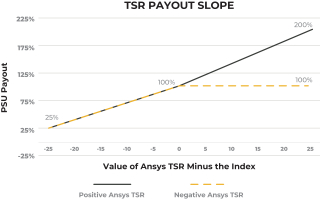
![[MISSING IMAGE: lc_tsrpayout-pn.jpg]](https://capedge.com/proxy/DEF 14A/0001104659-24-045818/lc_tsrpayout-pn.jpg)
![[MISSING IMAGE: bc_capvstsr-pn.jpg]](https://capedge.com/proxy/DEF 14A/0001104659-24-045818/bc_capvstsr-pn.jpg)
![[MISSING IMAGE: bc_capnetincome-pn.jpg]](https://capedge.com/proxy/DEF 14A/0001104659-24-045818/bc_capnetincome-pn.jpg)
![[MISSING IMAGE: bc_capvsacv-pn.jpg]](https://capedge.com/proxy/DEF 14A/0001104659-24-045818/bc_capvsacv-pn.jpg)
![[MISSING IMAGE: bc_sctttlvsacv-pn.jpg]](https://capedge.com/proxy/DEF 14A/0001104659-24-045818/bc_sctttlvsacv-pn.jpg)

![[MISSING IMAGE: ic_shareholder-pn.jpg]](https://capedge.com/proxy/DEF 14A/0001104659-24-045818/ic_shareholder-pn.jpg)

![[MISSING IMAGE: ic_hand-bw.jpg]](https://capedge.com/proxy/DEF 14A/0001104659-24-045818/ic_hand-bw.jpg)

![[MISSING IMAGE: lg_ansys-pn.jpg]](https://capedge.com/proxy/DEF 14A/0001104659-24-045818/lg_ansys-pn.jpg)
![[MISSING IMAGE: cv_obc-pn.jpg]](https://capedge.com/proxy/DEF 14A/0001104659-24-045818/cv_obc-pn.jpg)
![[MISSING IMAGE: px_24ansysproxy1pg01-bw.jpg]](https://capedge.com/proxy/DEF 14A/0001104659-24-045818/px_24ansysproxy1pg01-bw.jpg)






![[MISSING IMAGE: px_24ansysproxy1pg02-4c.jpg]](https://capedge.com/proxy/DEF 14A/0001104659-24-045818/px_24ansysproxy1pg02-4c.jpg)